Peter Bauhuis is an original. His new show at Gallery S O is named after a mushroom called Armillaria, which creates a large underground network from which the mushrooms sprout. Peter’s jewelry looks like it’s related to the mushroom and in his telling is connected to a network of ideas. You can feel his love of metallurgy and alchemy and the history of those who have experimented with it in this work. The results are satisfying objects holding many secrets open to interpretation.
Susan Cummins: Peter, please explain the meaning of Armillaria, the title of your show.
Peter Bauhuis: Armillaria (actually Armillaria mellea) is the Latin name for the honey fungus—a species of fungus that forms a huge and invisible underground network. When we see its fruits popping up here and there, we call them mushrooms. No one would realize that they are interconnected, and yet that is what determines the organism as such.
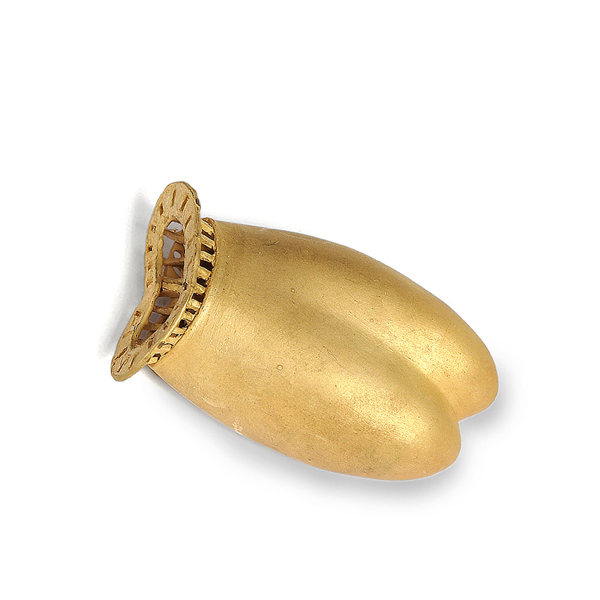
Of course the fungus is neither the theme nor a motto of the exhibition, even though some people seem to spot mushroom-like forms in my work. However, the mushroom image provides a felicitous analogy for an interconnectedness of things that is not immediately visible. It serves as a metaphor for my work, which might often appear as a collection of disparate objects. But things that appear unconnected can very well be close to each other. In the show I wanted to create possibilities for associations that spin around my work, without actually explaining anything literally. A multitude of links and connections, similarities of thoughts and forms create a network between my thinking and making. (My book, the Abecedarium, was another attempt to do this.)
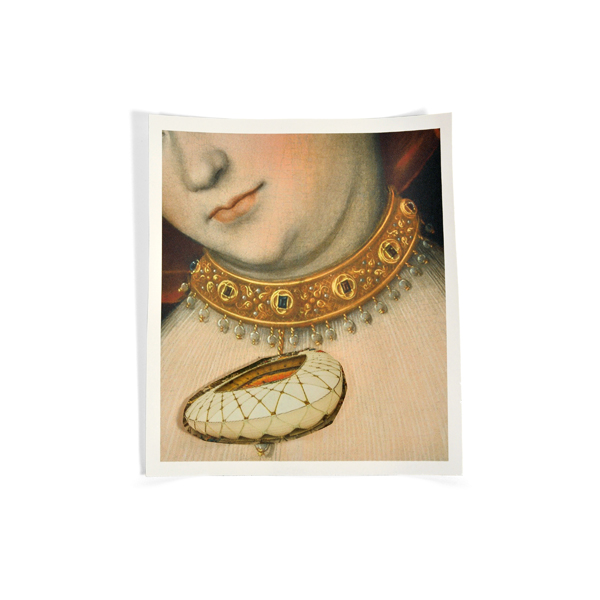
The exhibition is a very personal cabinet of wonder. I like the early museums’ demand for universality. These chambers of curiosity involved a mixture of opposing attitudes like showing off and humble admiration for the wonders of the world. They connected the found with the made, were always in praise of the special, and full of amazement with respect to the peculiar. They always asked the question, how and why anything is at all connected to anything else. The idea of science had not yet been launched and knowledge was not yet divided into disciplines.[11]
In Armillaria I show again—side by side—new works and peculiarities, inspirations and sketches, older works and their carefully designed captions and labels. As the art critic and curator Heinz Schuetz put it: “Unlike conventional presentations, in which the hierarchies are clear and everything that is not jewellery serves as decoration on top of decorations to enhance the visuals and value of gems, Bauhuis gives equal billing to all, presenting the precious and the cheap, the found and the handcrafted, the well-cast and the off-cast, and postcards, texts, and stamps alongside rings, chains, and vessels.”[12]
This might reveal a certain distance that I assume toward my own work. At the same time, it indicates a very strong affection toward my “other” exhibits. They are things that somehow caught my interest and now appear as an invitation to the viewer to find out what they have to do with him or her. Now and then people come up with associations and analogies I had never thought of myself. Obviously, this becomes part of the work as well.[13]
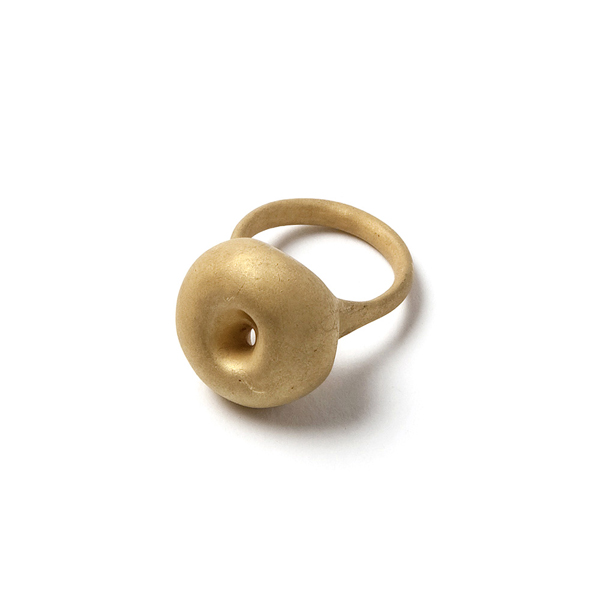
Peter Bauhuis: In Armillaria you find my latest cast necklaces and rings that all deal with holes and surface, with topology, as one might say. Knot theory and topology are mathematical fields, dealing with space in a manner similar to sculpture and defining the space in which things are to be found. So I found it rather appropriate to give some of the pendants the first names of mathematicians: Albert, René, Muhamad, Emmy, Blaise, etc.
Knot theory also played a role in my exhibition in the Artkommunalka museum in Kolomna, Russia, where I was invited as an artist in residence in June 2013. Under mysterious circumstances, I was given access to an archaeological treasure trove.[14] Its objects would appear to be attributable to a previously unknown civilization of the late Migration period. Their shapes suggest that knot theory was of great significance to this Prekolomnian culture.[15]
A well-known project is The Gallium Hoard, an exhibition I curated as a guest in the State Archeological Collection in Munich.[16] Some 80 pieces of jewelry made of an off-white metal were shown in one of the museum’shalls [17] in the typical manner in which treasure troves are shown. Panels with texts and images explained the pieces: Iron Age origins seemed likely, even though the sizable dimensions and weight lent a contemporary look and feel to some of the artifacts. The material—as we could read—puzzled the scientists. The objects were made of gallium, a metal that melts at a temperature of just under 30 degrees Celsius. The jewelry could therefore surely never have been worn. What purpose did it serve then? There was no reference to the possibility that it could be an art exhibition. The mass of texts did not fulfill the visitors’ wish for an explanation. Instead, it kept them stuck between belief and doubt. [18]
Your vessels, your jewelry, and the Abecedarium book you produced all seem to have an arcane, mysterious, or alchemistic aura to them. Why is this?
Peter Bauhuis: I see nothing arcane or mysterious in my work, but if some people find some of it enigmatic or inexplicable I could take it as a compliment. Alchemists believed in the connection of things, in taking them apart and putting them together again. This is a thought I find rather appealing as a metaphor. The esoteric part of alchemy is largely overrated.
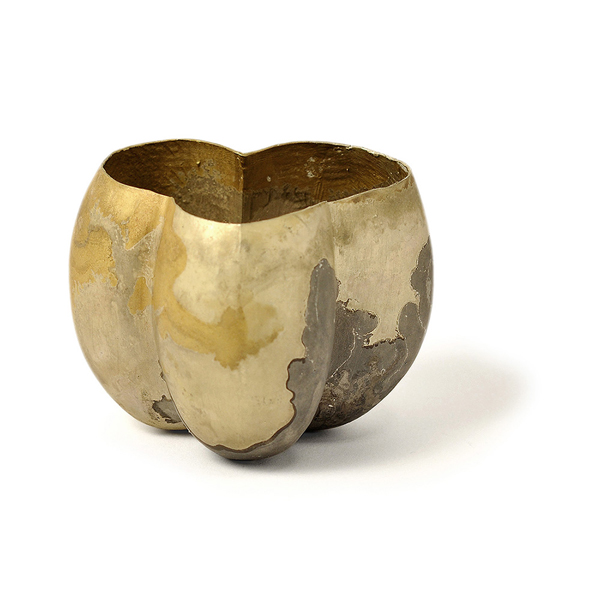
Where does your jewelry fit into our modern culture?
Peter Bauhuis: Modern culture will have to find that out.
Who do you admire most? Has this person been an inspiration for you?
Peter Bauhuis: I do not believe in charts, and do not know how the inspiration of just one person could have been most influential for me. It is an entire enmeshment of artists, friends, colleagues, teachers, books, films, visits to exhibitions, museums, the Internet, nature, etc., that functions as an archive from which I profit.
You’re a professor at Alchimia; what is an example of a problem you like to assign your students?
Peter Bauhuis: Teaching the students of Alchimia in Florence[19] involves a number of assignments, guiding their personal and artistic development toward an attitude of self-awareness with respect to their own work and to jewelry in general. That is naturally not always related to my own artistic work. However, I would like to mention an example that could be connected with the exhibition Armillaria. As a preparation for a workshop called Science and Fiction we went to one of the wonderful traditional museums of the University of Florence[20] under the assumption that all museum captions, labels, and descriptions were wrong, so that the students had to invent new ones, providing plausible stories associated with them. The result was a multitude of explanations from at least one parallel world.
I am happy and excited at being invited to run a related workshop in February 2015 with students of the Manukau Institute of Technology in Auckland, New Zealand: Isopaedia—An Incomprehensive Compendium of Incredible Strange Objects. Both jewelry- and creative-writing classes will participate in a project on stories and their objects. Makers and writers will write and make within the framework of a laboratory for fusing narrations, things, and their making.
By the way: Armillaria not only belongs to the largest single organisms known, [21] it also glows in the dark.
Thank you.
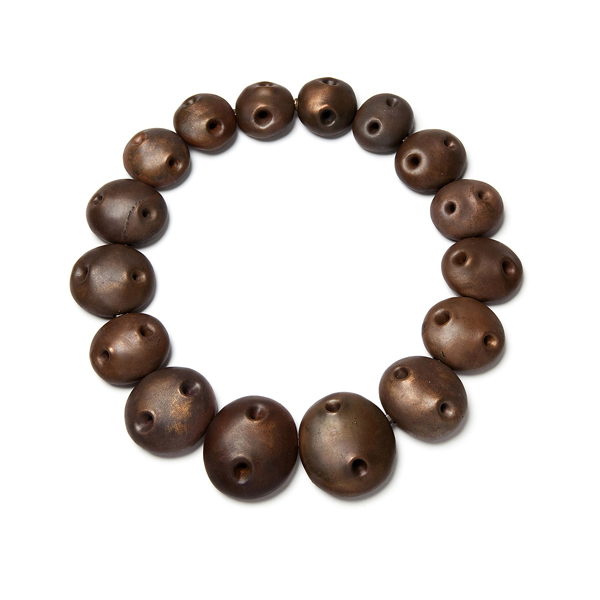

INDEX IMAGE: Portrait of Peter Bauhuis, photo: artist
[1] Lucas Cranach the Elder, Judith with the Head of Holofernes, 1526–1530, oil and tempera on limewood, 87 x 58 cm, Staatliche Museen, Kassel, Germany.
[2] Arena da Amazônia, Manaus, Amazonas, Brazil.
[3] On the card, we actually see a print of a cut-out ink-jet print of a section of an image taken from a painting by Lucas Cranach with the cut-out of an ink-jet print of the picture of a stadium found on the Internet. The stadium is also part of my (paper) work shown in the exhibition several edifices seen a lot in the media in 2014—mainly, but not only, stadiums printed on A4 paper, hung on the wall in a row, they are round and hollow, and maybe some acquire an association with jewelry, they could be a study for a necklace, maybe a future work?
[4] In the showcase next to the print, a label states “everything we see could also be otherwise, Ludwig Wittgenstein, Tractatus logico-philosophicus 5.634.”
[5] Elias Canetti, Crowds and Power, 1960.
[6] Estadio Nacional de Chile, http://en.wikipedia.org/wiki/Estadio_Nacional_Julio_Mart%C3%ADnez_Pr%C3%A1danos.
[7] http://www.herzogdemeuron.com/index/practice/writings/conversations/von-moos-en.html.
[8] http://images.tate.org.uk/sites/default/files/styles/grid-normal-8-cols/public/images/r3_suddenly-popular-opposites_lg.jpg?itok=Sulxx306.
[9] And I didn’t mention Cranach’s preference for the theme of Judith with the beheaded Holofernes and the gloves Judith wears over her rings.
[10] Artist’s selection—all other footnotes permitted.
[11] Heinz von Foerster (1911–2002), cybernetics pioneer and the inventor of second-order cybernetics, noted that the word science stems from the Indo-European root skei, which means to cut or split. It indicates separation in words such as schism and schizophrenia, as well as in another word that describes something we wish to separate ourselves from—shit. Heinz von Foerster (lecture, Goethe University, Frankfurt, Germany, June 6, 1994).
[12] German art critic Heinz Schuetz’s text from 2013 on my Munich show Hallimasch (which is the nice-sounding German word for Armillaria mellea).
[13] The philosophers of radical constructivism as well as 20th-century physics pay attention to the viewer as part of a process, in which his role might even change the observed process/object in general, not just its perception.
[14] Фильм к выставке Петера Баухьюса “Утраченные сокровища – вольная интерпретация,” http://www.youtube.com/watch?v=mNWeVz5LNnI.
[15] The twin loops motif seems to have been particularly important—is this where the iconic shape of the pretzel originated? http://www.inearch.blogspot.de.
[16] The Gallium Hoard of Obertraun—presented by Peter Bauhuis and The Institute for Newer Archaeology, Bavarian State Archaeological Collection, Munich, Germany, March 16–May 8, 2011.
[17] http://www.archaeologie-bayern.de/de/archiv/mitteilungsblatt/mitteilungsblatt-nr-129/ (this is in German).




